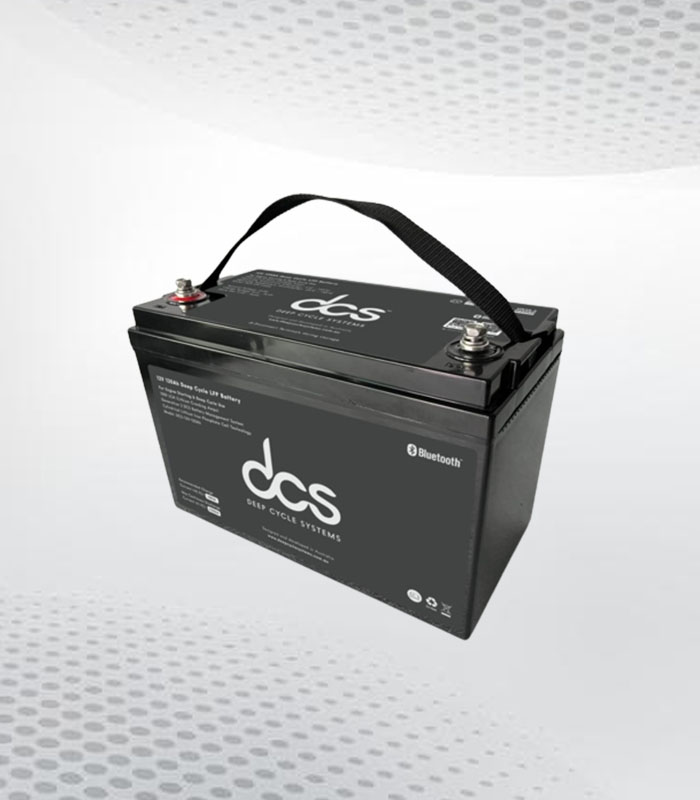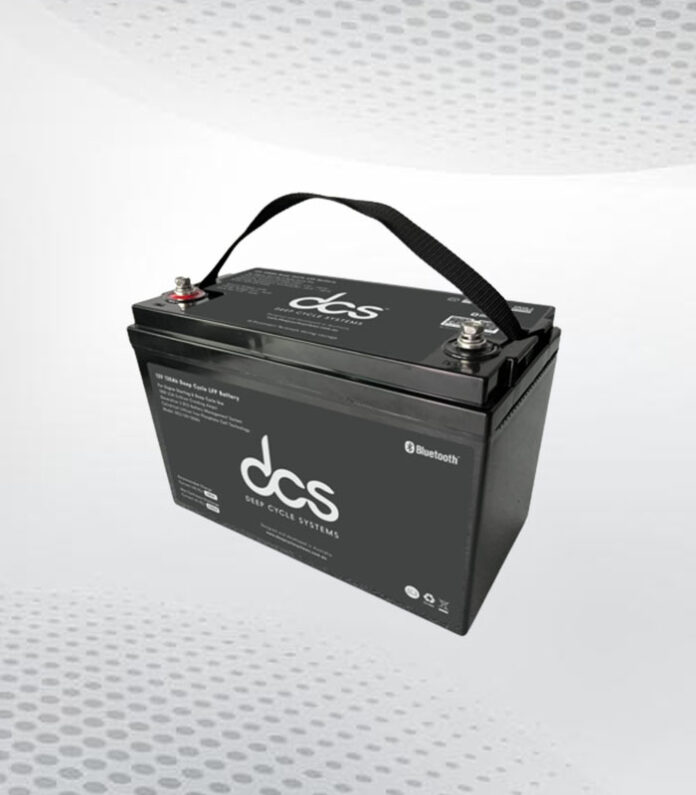As more individuals embrace the digital era, the demand for a reliable source of power has skyrocketed. Enter Group 31 Deep Cycle Battery, reliable power sources used in various applications, from marine to solar installations. Today, we shall delve into the mystery of group 16 deep cycle batteries, exploring their features, performance, and potential.
Understanding The Concept Of 31 Deep Cycle Battery
Deep cycle batteries stand out as power sources due to their unique design purposed to provide continuous power over a significant duration. Distinct from standard batteries, these batteries have the resilience to undergo frequent and substantial discharging with minimal impact on their overall performance and longevity.
This makes them the optimum choice for applications that require long-term energy supply, encompassing electric vehicles and renewable energy installations. 31 deep cycle battery design and capacity ensure they can sustain power requirements for extended periods, underpinning their importance in today’s digitally driven era.
A Closer Look at Group 31 Deep Cycle Batteries
Taking centre stage in the realm of deep cycle batteries, the group 31 variants are indeed a force to be reckoned with. They’re popularly referred to as the power behemoths, owing to their superior energy density that never fails to deliver. Their architecture is characterised by densely packed lead plates, a feature that significantly escalates their energy storage potential. This coupled with their impressive resilience to repeated discharges, make them a widely sought after energy solution in industries such as marine and recreational vehicle applications. In a nutshell, group 31 batteries are your go-to power sources when you require an energy solution that promises reliability, high capacity and durability.
 Deciphering Secrets Of Group 24 Deep Cycle Battery
Deciphering Secrets Of Group 24 Deep Cycle Battery
Delving into the world of group 24 deep cycle batteries, one discovers their adaptability is their strongest asset. Their streamlined size is conducive to a diverse array of applications, spanning from marine to recreational vehicles. Although these batteries may appear petite, don’t be deceived by their modest appearance. They indeed command significant power, effortlessly standing up to rigorous discharging regimes.
Their compact build and impressive energy output make them the power source of choice for many seeking a smaller but potent energy solution. So, if you’re on the hunt for a battery that offers a blend of space-saving design and uncompromising performance, a group 24 deep cycle battery could be the ideal fit for your needs.
Spotlight On The Group 29 Deep Cycle Battery
Presenting the formidable group 29 deep cycle batteries, they’re a preferred choice for that requiring power sustenance over a significant duration. They’ve been engineered for consistency and durability, effortlessly ticking the boxes for heavy-duty applications. Boasting a sturdy design combined with innovative power technology, group 29 deep cycle battery comes second to none when it comes to dependability and high-performance.
Their versatile power solution serves numerous industries, making them a prevalent choice. Their design aesthetics carry a promise of sustained power provision, making them an attractive proposition. If you’re seeking a battery that assures you of consistent power, then the group 29 variant is worth considering.
Comparison of the 31, 24, and 29 Group Deep Cycle Batteries
When comparing the Group 31, 24, and 29 deep cycle batteries, it becomes clear that their differences lie predominantly in size, capacity, and usage. The Group 31 variants, being the largest, are perfect for substantial, heavy-duty applications due to their superior capacity. Conversely, the Group 24 batteries, whilst smaller, remain steadfast in their power delivery, making them suitable for a wide array of applications.
Meanwhile, the Group 29 batteries strike an effective balance between output and size. They have proven to be highly versatile across diverse industries due to their consistent performance and adaptable design. Each group, therefore, offers unique advantages tailored to specific power needs and applications.
Maintaining The Performance Of 24 Deep Cycle Battery
The upkeep of deep cycle batteries plays a pivotal role in their overall performance and longevity. It is essential to undertake routine checks and cleaning processes to keep them in prime condition. Moreover, 24 deep cycle battery powerhouses need to be consistently kept at full charge to maximize their efficiency. One should refrain from letting them discharge deeply, as this could potentially impact their lifespan.
Furthermore, off-season storage necessitates careful consideration to maintain their efficacy. In a nutshell, the optimal functioning of deep cycle batteries is closely tied to their maintenance regime. Implementing these simple yet crucial practices can ensure their operational efficiency, thereby prolonging their service life.
The Future of Deep Cycle Batteries
The forthcoming era of deep cycle batteries is bright, as technological developments are in the pipeline to boost their effectiveness, durability, and safety. In the foreseeable future, anticipate the evolution of hard-wearing designs, top-tier materials, and intelligent features that augment their operational efficiency.
The introduction of intelligent batteries capable of communicating their state of charge and health, coupled with features that protect against harsh weather conditions and over-discharging, will likely become mainstream. Additionally, the continuous push for greener technologies hints at a future where deep cycle batteries are more eco-friendly and sustainably produced.
Unveiling the Group 16 Deep Cycle Battery Potential
Despite being less renowned than its siblings, the group 16 deep cycle battery encapsulates great potential. This impressive energy source boasts a remarkable energy density and notable lifespan, even when subjected to recurrent discharging. Its capabilities as a solid and trustworthy power solution for high-demand applications render it a promising prospect within the deep cycle battery sector.
Unveiling the Group 16 Deep Cycle Battery
The group 16 deep cycle battery, although less well-known than its counterparts, offers significant power solutions. It is specifically crafted for demanding applications, with its structure incorporating dense lead plates for maximized energy storage.
This, coupled with a commendable discharge rate, qualifies it as an invaluable power asset across various sectors. Thanks to its resilience to recurring discharging and formidable energy density, the group 16 variant emerges as a promising contender within the deep cycle battery arena.
As we look ahead, its potential for various applications only grows, solidifying its position within the dynamic energy landscape. Its capabilities and potential cement its standing as a power source worth understanding and investing in.
Expert Tips for Extending Battery Life
To prolong the lifespan of your deep cycle battery, a series of steps should be consistently implemented. Regular charging is crucial; however, be sure to steer clear of discharging below 50% as this could be detrimental to your battery’s health. Maintenance is another essential aspect; this includes regularly cleaning the battery terminals and monitoring the electrolyte level. It’s also vital to store your battery correctly, particularly during periods of inactivity, as this can significantly enhance its lifespan. By adhering to these guidelines, you can ensure that your deep cycle battery remains in optimum condition for as long as possible.
What is typical lifespan of a group 16 deep cycle battery under regular use?
The typical lifespan of a Group 16 deep cycle battery depends on several factors, such as the extent of use, frequency of discharge, and upkeep practices.
When used in line with the manufacturer’s guidelines and coupled with meticulous maintenance, these batteries can showcase a remarkable lifespan ranging between 4 to 8 years, sometimes extending even further. Nonetheless, this figure isn’t set in stone; it’s heavily influenced by how often the battery is discharged and subsequently recharged.
Over-discharging, for instance, can significantly reduce its lifespan. Therefore, while Group 16 deep cycle batteries demonstrate substantial durability, it’s the user’s responsibility to optimise their operational practices to amplify the battery’s lifespan. Regular charging, refraining from deep discharging, and careful storage during off-peak periods can notably prolong the service life of these power sources.
Advancements of deep cycle batteries
The realm of deep cycle batteries has experienced a remarkable evolution, spurred on by the relentless pursuit of innovation and enhancement.
- A pivotal advancement is the integration of smart technology, enabling batteries to self-monitor and communicate key performance data. This intelligence gives users insight into their battery’s state of charge and health, heralding a new era of convenience and functionality.
- Also, research is underway to enhance the material construction of these batteries, aiming to increase energy density and lifespan. Novel electrode materials like lithium and silicon are under exploration, aimed at increasing the overall efficiency and reducing charging times.
- Furthermore, to combat issues related to extreme weather conditions, technological advancements are looking at making these batteries more weather-resistant.
- Another exciting development is in the field of ‘green batteries,’ striving towards environmentally friendly, sustainable production methods that reduce carbon footprints. Thus, the future of deep cycle batteries is set to be redefined by innovative advancements, boosting their capabilities and adapting to ever-changing energy requirements.
FAQs
1. Q: What are the main applications of group 16 deep cycle batteries?
A: Group 16 deep cycle batteries are primarily used in demanding applications that require a reliable power source. They’re ideal for marine, renewable energy installations and electric vehicles.
2. Q: How do group 16 deep cycle batteries compare to the group 31, 24, and 29 variants?
A: Group 16 batteries offer an impressive energy density and notable lifespan. While they may not have the high energy storage potential of group 31 batteries, they can match the power delivery of group 24 batteries and exceed the discharge resilience of group 29 batteries.
3. Q: What is the lifespan of group 16 deep cycle batteries?
A: The typical lifespan of a group 16 deep cycle battery is between 4 to 8 years. This, however, can be influenced by the extent of use, frequency of discharge and maintenance practices.
4. Q: What advancements are expected in deep cycle batteries?
A: Future advancements include integration of smart technology, improved material construction, increased weather resistance, and the development of ‘green batteries’ with sustainable production methods.
5. Q: How can the lifespan of deep cycle batteries be extended?
A: Regular charging, avoiding over-discharging, conducting regular maintenance and correct storage during off-peak periods can prolong a battery’s lifespan.
Conclusion
In exploration of deep cycle batteries, unpacked the attributes, uses, and potential of the group 16, 31, 24, and 29 variants. Each exhibits unique advantages tailored to specific power needs and applications. While group 31 batteries reign with their superior capacity, groups 24 and 29 excel in adaptability and consistent performance. The less renowned but promising group 16 variant showcases impressive energy density and resilience, proving itself to be a valuable contender. The importance of maintenance for longevity has been emphasized, alongside exciting future advancements.
| Other Good Articles to Read |
| Skank Blogs |
| Unreal Blogs |
| Tba Blogs |
| All City Forums |
| Dany Blogs |
| Refuge Blogs |
| The Music Blogs |
| Key Forums |
| The Big Blog Theory |
| Joe Blogs |
| Blogs 4 Me |
| Blogs Emon |
| Related Business Listings |
| Directory Submissions |
| Regional Directory |

